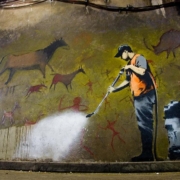Is It Slow Food or an Inefficient Kitchen?
The Slow Food movement, which began in the mid-1980s in Bra, Italy, was a response to the rise of fast food and industrialized eating. Spearheaded by Carlo Petrini, an Italian activist and author, it encouraged people to embrace traditional cooking methods and a slower, more deliberate approach to food preparation.
Predictably many articles and books were written, restaurants opened, and celebrity chefs championed the concept.
Over time, this idea expanded beyond food, into broader cultural values, emphasizing the importance of slowing down to savor life. Today, the word “slow” has entered the cultural zeitgeist, and now associated with doing work of high quality, and done with care, and thoughtfulness
In several areas of life, slowing down makes sense. In academia, for instance, the profession I work in, taking the time to collect data, analyze it using appropriate methods, writing up one’s findings, and then subjecting the paper to peer review is crucial. Using this approach leads to a steady accumulation of knowledge and occasional breakthroughs.
However, when it comes to restaurants, not all slow cooking is a virtue. Sometimes slowness in food preparation isn’t a sign of quality—it’s a sign of inefficiency, low skill levels, or poor planning. This can include: sitting in a restaurant, waiting for what feels like forever for a meal that eventually arrives, long waiting times between courses, or people at your table getting their food at significantly different times. Assuming that the dysfunction is not a result of miscommunication between the front of the house (the wait and serving staff) and the back of the house (the kitchen), the problem here isn’t the concept of slow cooking, but rather a kitchen that doesn’t have its act together.
All this to say, is that there’s a fine line between a deliberate, well-executed slow-cooked meal and a disorganized kitchen that simply can’t keep up. While the former elevates the dining experience, the latter leaves customers frustrated and unsatisfied. More specifically, not every meal that seems to take an extra ordinary time to be cooked means the chef and their cooking staff is taking extra care—sometimes, it just means the kitchen is poorly managed.
Cross cutting through this argument is the economic realities of running a restaurant. Although some high-end establishments succeed with slow dining models by offering limited seating and charging premium prices, most places can’t afford the luxury of having only one seating per night. For them, slowness can jeopardize economic viability.
So, while the Slow Food movement offers valuable lessons about authenticity, patience, and quality, it’s important to recognize that not all slowness is a sign of craft. In some cases, slowness is simply a symptom of inefficiency. Just because a meal takes longer to prepare doesn’t always mean it’s better.
Ultimately, the difference between thoughtful slowness and outright inefficiency comes down to intention. Is the chef (and kitchen staff, if they exist) deliberately slowing things down to enhance the flavors and the experience? Or is the kitchen simply unable to keep up with orders? As with many things in life, context matters. Slowness is only a virtue when it’s done with purpose and planning—whether in a restaurant kitchen, an academic setting, or beyond.
Photo Credit
The Three Stooges from “Half-Shot Shooters” (1936).












